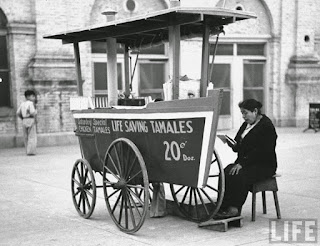We are the Champions
In front of
2,000 spectators, a Brownsville six-man team out maneuvered their Valley
opponents to bring home the championship trophy. The occasion was the third
annual Valley Firemen and Fire Marshals’ Association field day in Weslaco.
After 16
fire departments concluded their firefighting demonstrations—the tone and all
eyes of the crowd were fixated on the up-coming pumper races.
As the race competition grew near—the crowd murmured
with excitement as the teams moved closer to the starting line. Just like most sporting events have
favorites, this event was no different.
Edinburg
stood out as the people’s choice to repeat.
The upper-Valley unit was currently the state champion in pumper racing,
an honor it had earned for two consecutive years.
Weslaco, who
had swept their adversaries in 1952, stood in the sidelines with what they thought
was a winning group.
The
Brownsville team—with total liberation from the pressures of the event, were
decisively underdogs.
The race was
simple enough that it took mere seconds to determine a winner. The race/task was to leave the truck and
hook-up a hose as they would to fight a blaze.
The favorite,
Edinburg, the darling team of the event, showed their supremacy as they cruised
to the finish line with a time of 20.2 seconds.
According to some aficionados, the race was a done deal.
But the
Brownsville boys surprise the partisan crowd by displaying a flawless
performance, with a winning time of 19.2 seconds. Members of the victorious team were Santiago
Santillano, Amado Garcia, Filipe Ramos, Charles Betz, Luis Camarillo, and
Eugenio Herrera.
Other teams
in the races and their times were Harlingen, 20.8; Mercedes, 24.0; San Benito,
24.6; Weslaco, 25.31; and Edcouch, 28.2
The
Brownsville unit beat the clock and in doing so, defeated the best teams in the
Rio Grande Valley, of which included state titlist, Edinburg.
Photo left to right: Luis Camarillo, Charles Betz, Felipe Ramos,
Chief Fred Lerma, Santiago Santillano, Amado Gracia, and Eugenio Herrera.
In the
summer 1967, this writer was a Edinburg Volunteer Fireman.






























